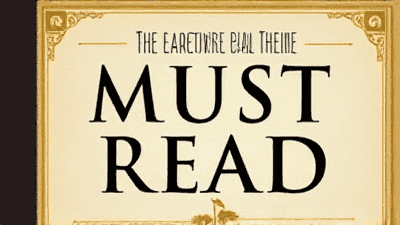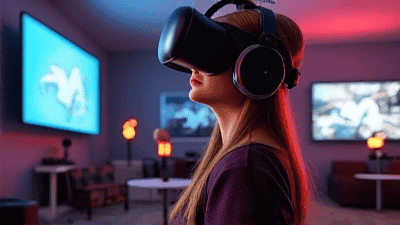
Impulse buying is a phenomenon that many people experience, often finding themselves making unplanned purchases that they later question. The allure of a good sale or a limited-time offer can trigger a buying spree that overshadows rational thought. Understanding the psychology behind impulse buying is crucial for consumers who seek to manage their spending habits as well as for retailers who aim to tap into this powerful consumer behavior.
The Basics of Impulse Buying
What Is Impulse Buying?
Impulse buying refers to unplanned purchases that occur in the spur of the moment, often driven by emotions rather than necessity. These purchases can range from small items like snacks or accessories to larger purchases like clothing or electronics. Impulse buying is a common behavior observed in various shopping environments, from brick-and-mortar stores to online platforms.
The Prevalence of Impulse Buying
Research shows that a significant portion of retail sales can be attributed to impulse purchases. Studies indicate that anywhere from 40 to 80 percent of consumers have made impulse buys at some point. This behavior is not limited to any particular demographic; it can affect individuals of all ages, genders, and backgrounds.
The Role of Retail Environments
Retailers have long understood the power of impulse buying and have strategically designed their environments to encourage such behavior. From store layouts and merchandise placement to promotional signage, every detail is carefully considered to increase the chances of unplanned purchases.
Psychological Mechanisms Behind Impulse Buying

Emotional Triggers
The Role of Emotions
Emotions play a pivotal role in impulse buying. Positive feelings such as excitement, joy, and happiness can trigger impulsive behaviors. When consumers are in a good mood, they are more likely to make spontaneous purchases, as the pleasure derived from the shopping experience can override rational thought.
Conversely, negative emotions like stress, sadness, or boredom can also drive impulse buying as individuals seek comfort or relief through retail therapy. The act of buying can provide a temporary escape from negative feelings and enhance mood, albeit temporarily.
Instant Gratification
The desire for instant gratification is another psychological factor that fuels impulse buying. In our fast-paced world, consumers often seek quick rewards. The thrill of making a purchase can trigger a rush of dopamine, the feel-good hormone, which reinforces the behavior and encourages future impulse buys.
Cognitive Biases
The Scarcity Principle
One psychological phenomenon that drives impulse buying is the scarcity principle. When consumers perceive that an item is available for a limited time or in limited quantities, their desire to purchase it intensifies. Retailers often use phrases like "limited time offer" or "only a few left" to create a sense of urgency, prompting consumers to act quickly to secure the deal.
Loss Aversion
Loss aversion is a cognitive bias whereby individuals prefer to avoid losses over acquiring equivalent gains. This principle suggests that the fear of missing out on a good deal can trigger impulse buying. When faced with a sale, consumers may feel a strong urge to purchase an item rather than risk losing the opportunity, leading to hasty decisions.
Social Influences
Peer Pressure and Social Proof
Social influences play a significant role in impulse buying behavior. Peer pressure can lead individuals to make unplanned purchases, especially when surrounded by friends or family who are engaging in similar behavior. Social proof, the phenomenon where individuals look to others for guidance on how to behave, can also encourage impulse purchases. Seeing others buy items can trigger a desire to conform and participate in the collective excitement.
Online Social Influence
With the rise of social media, influencers and online communities have significantly impacted consumer behavior. The visibility of products shared by influencers can create a desire to purchase items simply because they are trendy or popular. This digital form of social proof often leads to impulse buying, particularly among younger consumers who are heavily engaged with online platforms.
External Factors Influencing Impulse Buying
Retail Strategies
Store Layout and Design
Retailers have long employed strategies to enhance impulse buying behavior through store layout and design. Placing high-demand items near checkout counters, utilizing eye-catching displays, and creating an inviting shopping atmosphere are all techniques aimed at encouraging spontaneous purchases.
Promotions and Discounts
Promotions, discounts, and bundle deals are powerful incentives for impulse buying. Retailers often create special promotions to entice customers to make unplanned purchases. The perceived value of a discount can push consumers to buy items they may not have considered otherwise, leading to spontaneous spending.
Technological Factors
E-Commerce and Mobile Shopping
The advent of e-commerce and mobile shopping has radically transformed consumer behavior. Online shopping platforms provide easy access to countless products, often accompanied by targeted advertisements that cater to individual preferences. The convenience of one-click purchasing and mobile apps has made it easier than ever to engage in impulse buying.
Personalized Marketing
Creating a personalized shopping experience through data analytics has become a standard practice. Retailers can use consumer data to tailor advertisements and recommendations, increasing the likelihood of impulse purchases. By showing consumers items aligned with their preferences, retailers can trigger unplanned buying behavior with minimal effort.
The Emotional Consequences of Impulse Buying

Short-Term Satisfaction vs. Long-Term Regret
While impulse buying can offer immediate satisfaction, it often comes with long-term consequences. Many consumers experience buyer's remorse after making impulsive purchases, leading to feelings of guilt or regret. The emotional highs derived from spontaneous spending can quickly sour once the reality of financial implications sets in.
Financial Stress
Engaging in impulse buying can create financial strain for consumers, particularly if they exceed their budgets or accumulate debt. The thrill of an impulse purchase may feel exhilarating at the moment, but the aftermath can lead to stress and anxiety regarding finances.
The Cycle of Retail Therapy
The cycle of retail therapy can trap consumers in a loop of impulse buying and emotional spending. Individuals seeking temporary escape from negative emotions may turn to shopping repeatedly, leading to a dependency on retail therapy for stress relief. This cycle can perpetuate financial instability while preventing individuals from addressing the root causes of their emotions.
Strategies for Managing Impulse Buying
Increasing Self-Awareness
Awareness of one’s triggers for impulse buying is the first step to managing this behavior. By recognizing emotional, social, or cognitive factors that lead to unplanned purchases, individuals can make more conscious decisions. Keeping a journal of buying habits or reflecting on purchasing motivations can foster self-awareness.
Setting Budgets
Establishing a budget is a practical approach to curbing impulse buying. By setting financial limits for discretionary spending, individuals can create a framework that encourages responsible shopping behavior. Sticking to a budget can help reduce the likelihood of making unplanned purchases.
Delaying Gratification
Practicing delayed gratification is an effective method for combating impulse buying. When consumers feel the urge to make an unplanned purchase, they can implement a waiting period, allowing time for reflection before making a final decision. This can help determine whether the item is truly needed or if the impulse is driven by fleeting emotions.
Creating a Shopping List
Creating a shopping list before heading to the store can help focus attention on necessary items and minimize the temptation to stray from planned purchases. By adhering to a list, consumers can prioritize their spending and reduce the likelihood of impulse buys.
Utilizing Technology Wisely
While technology can facilitate impulse buying, it can also serve as a tool for managing spending. Budgeting apps and financial tracking tools can help individuals monitor purchases and expenditure. Setting notifications for budget limits can create accountability while discouraging impulse buying behaviors.
The Future of Impulse Buying

Trends in Consumer Behavior
As consumer behavior continues to evolve, so too will the trends influencing impulse buying. Ongoing developments in technology, retail strategies, and societal values will shape how individuals approach shopping, whether in-store or online.
Sustainability and Conscious Consumerism
A growing emphasis on sustainability and conscious consumerism may lead to shifts in impulse buying behavior. As individuals become more aware of the impact of their purchasing decisions, there may be a decline in unplanned purchases, particularly for items that contribute to waste or environmental harm. Retailers that align with these values may see a shift in consumer priorities.
The Role of Mental Health Awareness
Increased awareness of mental health issues may also play a role in the future of impulse buying. As consumers become more attuned to the emotional and psychological triggers driving their spending habits, they may seek healthier coping mechanisms, resulting in reduced reliance on impulse buys.
Conclusion
The psychology of impulse buying is a complex interplay of emotions, cognitive biases, social influences, and environmental factors. Understanding the underlying mechanisms that drive this behavior can empower consumers to make more informed purchasing decisions. While the thrill of a good sale may be hard to resist, recognizing the consequences of impulse buying can lead to healthier financial habits.
As we navigate the ever-evolving landscape of consumer behavior, fostering self-awareness, practicing responsible spending, and encouraging mindful consumption will be key strategies for managing impulse buying. By addressing the psychological aspects of this behavior, consumers can better align their purchasing decisions with their values, goals, and overall well-being.








